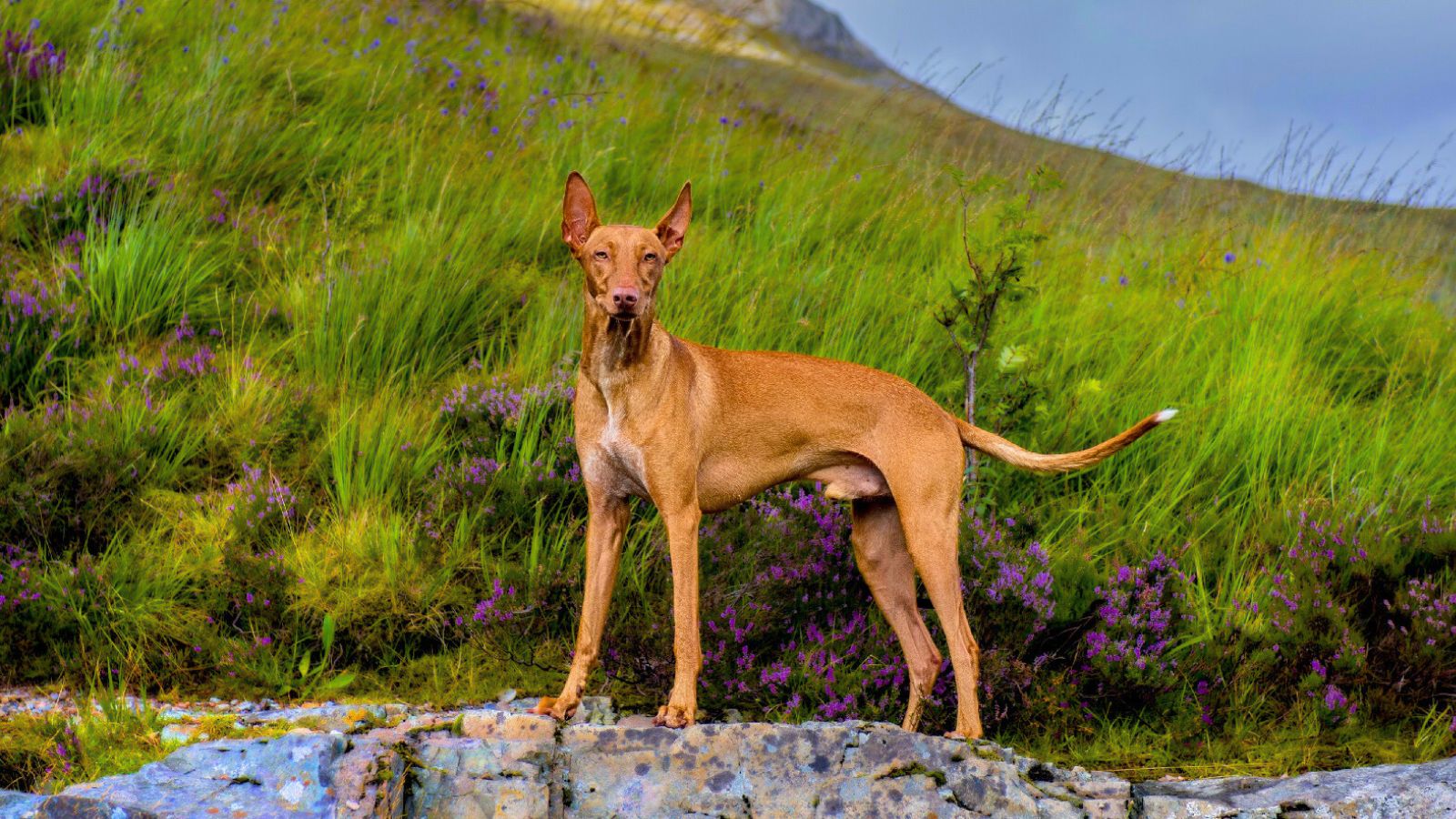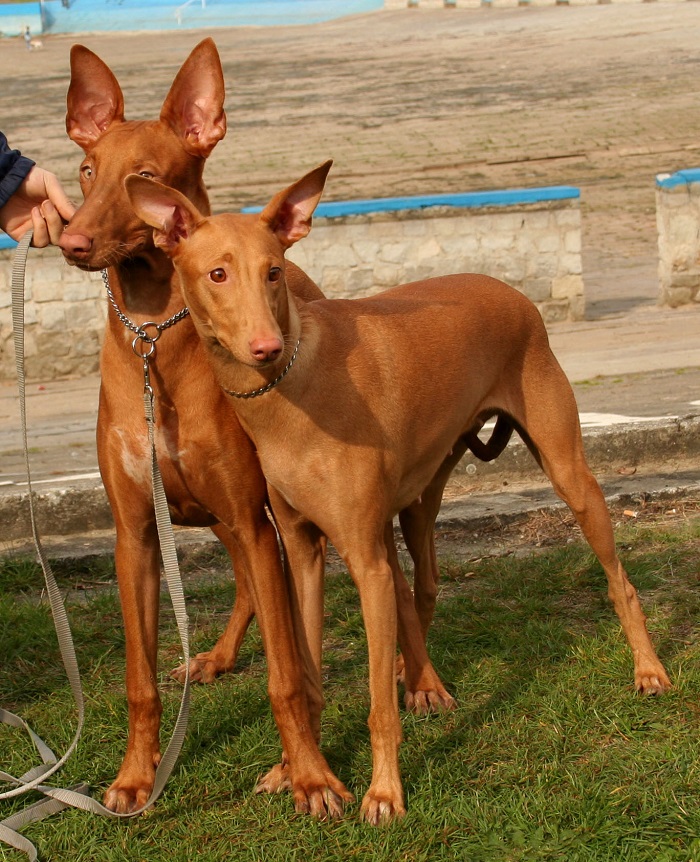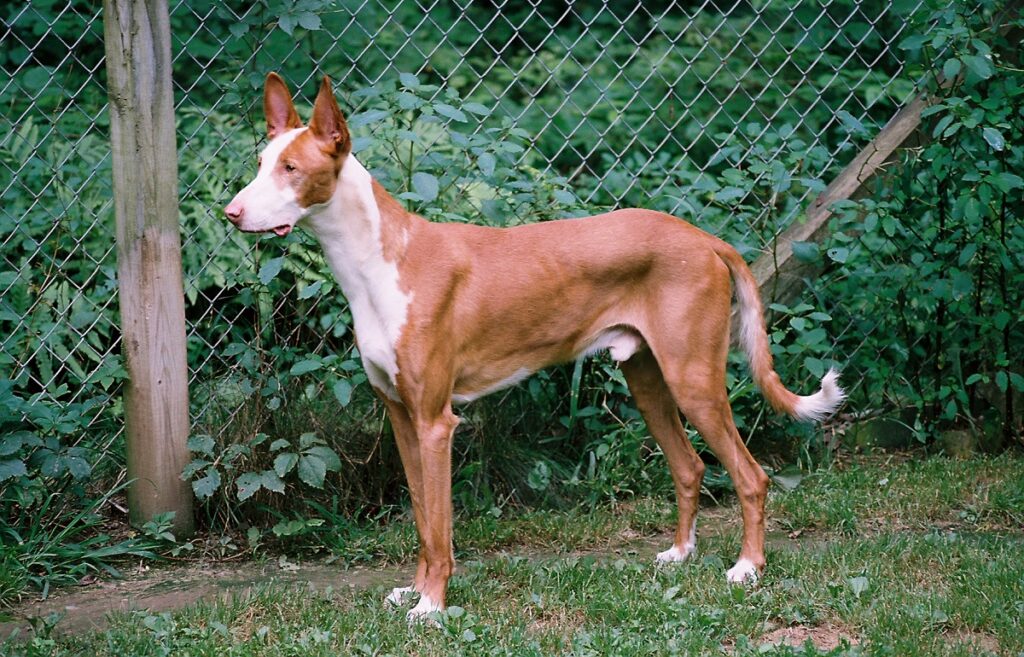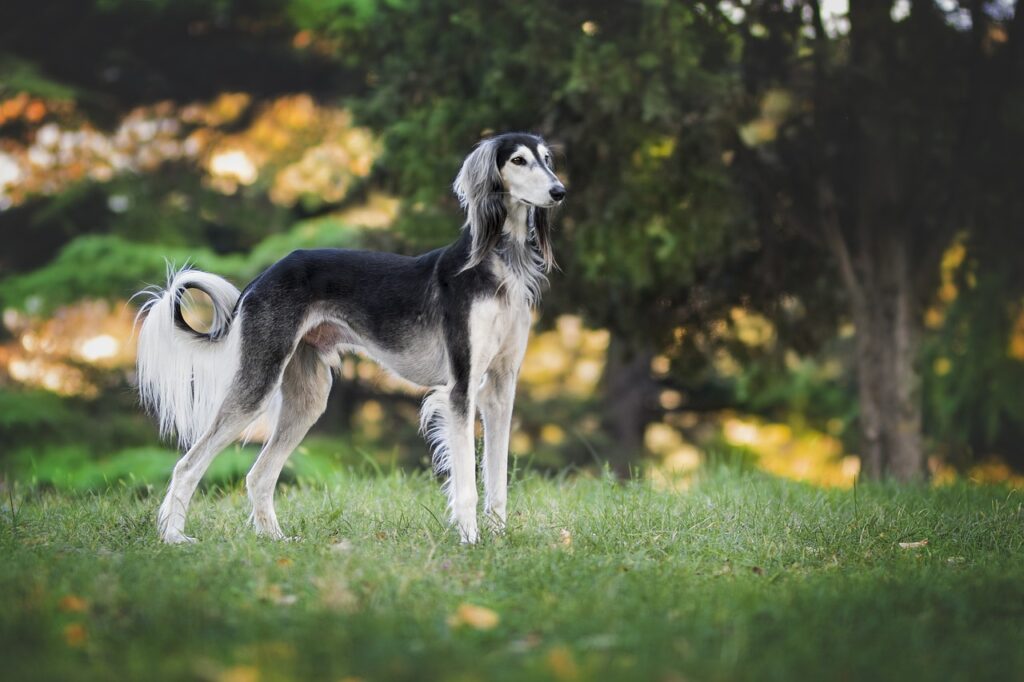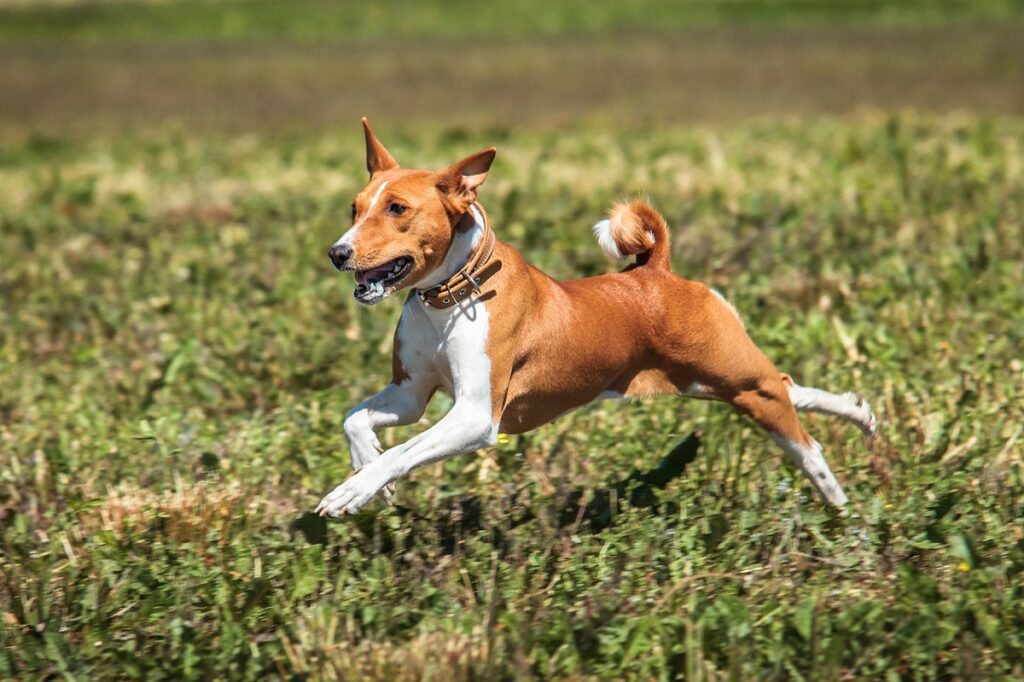Ancient Egypt revered dogs, not merely as pets, but as guardians, hunters, and even symbols of divinity. Their images adorn temple walls and tombs, testament to a deep bond forged millennia ago. Explore the fascinating world of Egyptian dog breeds, from the sleek Pharaoh Hound mirroring its namesake’s regal bearing, to the powerfully-built Basenji, whose silent bark echoes a mysterious past. Unearth their rich histories, tracing their lineage back to the very cradle of civilization and discover the enduring legacy of these remarkable canine companions.
Dogs have a lot of history, and while we may not be privy to all of it, we can take clues from ancient civilizations as to how they were treated and revered. This includes Egypt, a country that bridges Africa with the Middle East.
Hieroglyphics from ancient Egyptian times, for example, show dogs depicted in a domestic manner, including a man walking one on a leash, meaning they were a large part of society back in those days.
They were also loved by their owners, and in ancient times, some who died had their dogs buried with them inside the tombs. They were also credited with having developed the dog collar, which often contained names such as “North Wind.”
Dogs then, like today, had important jobs. For ancient Egyptians, they were herders, hunters, and guard dogs, and today’s Egyptian dog breeds still exhibit many of the same traits that they did back then.
They tend to have lean physiques and pricked ears, and some breeds may even be confused with others because they tend to look a bit similar. These dogs all have a similar life expectancy as well.
Egyptian Dog Breeds
Like their ancestors, these dogs were bred to do hard work and, as such, have high-energy drives. They need a lot of physical and mental stimulation. As such, Egyptian breeds, which are some of the oldest dog breeds, are better suited to pet owners who are active or can spend a significant amount of time with their pets.
There aren’t many Egyptian breeds, but the dogs that do exist have roots that date back to ancient Egyptians. Let’s take a look at what these beauties entail.
1. Armant (Egyptian Sheepdog)
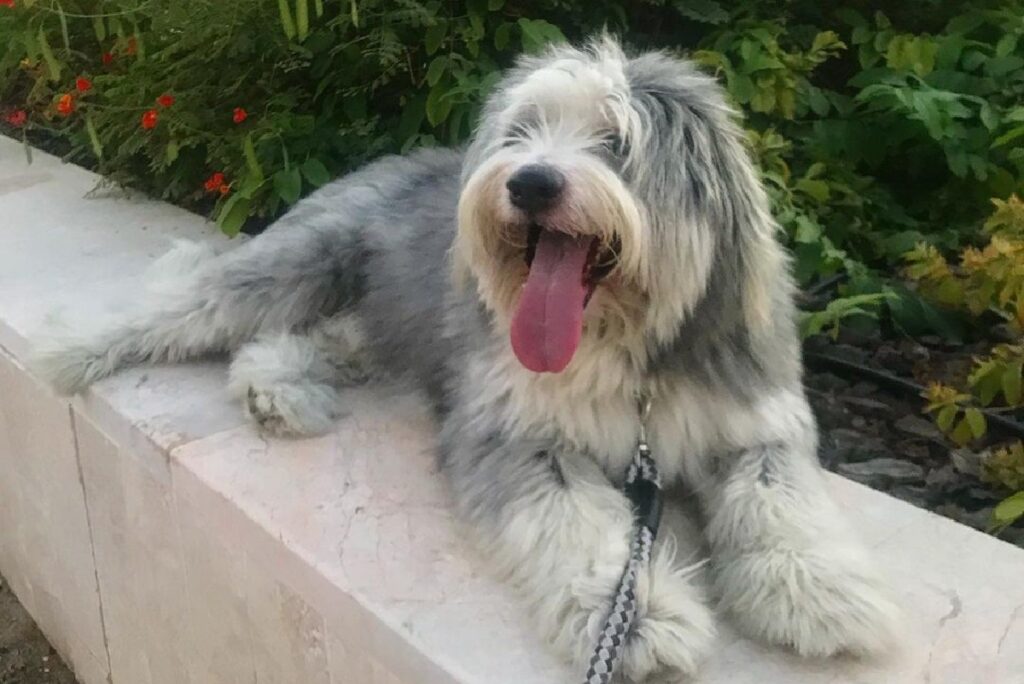
| Group | Not recognized by the American Kennel Club (AKC) |
| Dog’s Size | 21″ to 23″ |
| Weight | 50 to 65 pounds |
| Fur and Color | Coarse, shaggy, or rough medium-length coat; yellow, black, gray, and tan |
| Lifespan | 14 to 15 years |
Named after the Egyptian town of Armant, this pup has been around since the early 1900s. This old breed is thought to be a byproduct of local dogs mating with Briards brought to Egypt by Napoleon.
It’s a working dog and not very well known outside of the transcontinental country, though it is recognized by the Egyptian Kennel Foundation. It differs from the other breeds on this list because it has long, shaggy hair as opposed to the short, smooth coats that many of the others have.
The ancient breed is also known for becoming one of the family members. These Egyptian dogs are known to form strong bonds with their owner and children, who are part of the family and don’t hesitate to show their loyalty, making them good companion dogs.
2. Pharaoh Hound
| Group | Hound |
| Dog’s Size | 21″ to 25″ |
| Weight | 45 to 55 pounds |
| Fur and Color | Smooth, short coat; tan, rich tan, chestnut, red golden |
| Lifespan | 12 to 14 years |
Want a pup that stands tall and regal but has a playful nature? Enter the Pharaoh Hound. Pharaoh Hounds date back to the land of the Nile.
In modern times, the Pharoah Hound is also popular on Malta, a Mediterranean island, where it’s known as kelb tal-fenek, or “rabbit dog,” because of its penchant for hunting rabbits. It’s also Malta’s national dog.
Pharaoh Hounds are very energetic dogs and suited for active families. Also, you shouldn’t have any small animals because these hunting hounds do have a strong prey drive.
However, these Egyptian dogs are great with children who are accustomed to being around — and respecting — dogs.
3. Ibizan Hound
| Group | Hound |
| Dog’s Size | 22″ to 28″ |
| Weight | 45 to 50 pounds |
| Fur and Color | Smooth or wiry short coat; red, red and white, white |
| Lifespan | 12 to 14 years |
The Ibizan Hound is another regal-looking pup with a lean stature attributed to Egyptian breeds. However, it should be noted that while the lineage of the Ibizan Hound dates back to Egypt, it’s said to be native to the Balearic Islands, which are located right off the coast of Spain.
Historic tales say that the breed spread to Spain via Phoenician traders. Like the Pharaoh Hound, the Ibizan Hound has a very strong prey drive and was cherished for its hunting ability.
It often sought and caught prey for its Mediterranean pet owners during times of famine. Ibizan Hounds do well in active homes, and tiring them out is key to having a calm, quiet dog.
4. Saluki
| Group | Hound |
| Dog’s Size | 23″ to 28″ |
| Weight | 40 to 60 pounds |
| Fur and Color | Smooth, short coat; black and tan, black tan and white, cream, golden, fawn, red, silver, white, chocolate, black |
| Lifespan | 10 to 17 years |
If you translate Saluki, you’ll find that it’s the Arabic word for “noble,” and noble these dogs are. The feathered fur on their ears and legs lends to a regal stature, and that’s evident in the Saluki personality as well.
The history of this pup dates back more than 5,000 years and is depicted on tombstones and sculptures from ancient Egyptian times.
If you adopt a Saluki, don’t expect it to be cuddly, but you’ll get its complete devotion. The breed is known for its independence and stubbornness, but the Saluki is also a sensitive soul.
Salukis were a huge hit with pharaohs and popular figures like Alexander the Great, who revered these Egyptian dogs for their hunting prowess and looks alike.
5. Basenji
| Group | Hound |
| Dog’s Size | 16″ to 17″ |
| Weight | 22 to 24 pounds |
| Fur and Color | Short, smooth coat; black, brindle, tricolor, chestnut, all with white legs, tail tip, and chest |
| Lifespan | 13 to 14 years |
When it comes to ancient breeds, the Basenji Dog is highly revered for its hunting capability, and that’s one feature that tribes in Central Africa sought after.
It has a lean stature and a temperament that more resembles a cat than a dog. One very interesting fact about the Basenji is that it’s called the barkless dog. Instead, Basenjis whine, squeak, and yodel, which proves to be very interesting to people hearing it for the first time.
The Basenji is a confident, independent dog that is also friendly and outgoing and, therefore, makes an excellent choice for active families that don’t want a dog that’s too clingy.
The Basenji has a stubborn streak and can be aloof, so don’t expect a cuddly pup or one that will follow you everywhere.
6. Baladi Street Dog
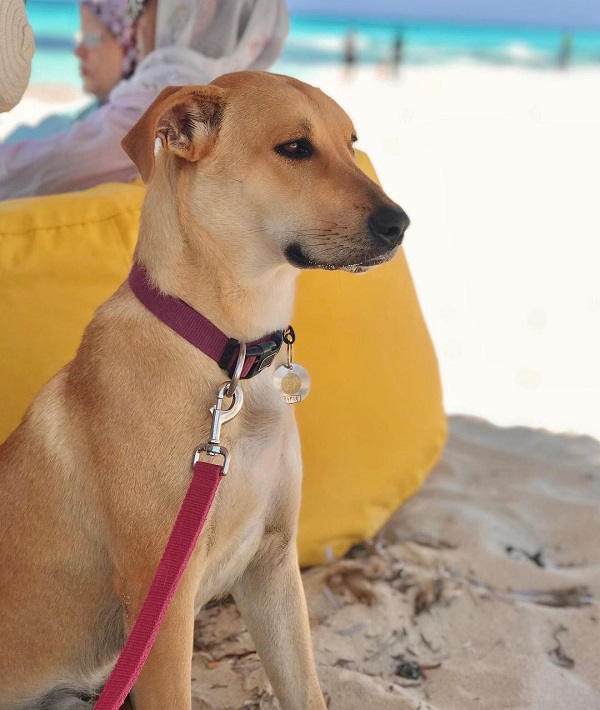
| Group | Not recognized by any clubs |
| Dog’s Size | varying |
| Weight | Medium-sized pups, 20 to 60 pounds |
| Fur and Color | black, brown, white, beige |
| Lifespan | 12 to 14 years |
The Baladi Street Dog is the country’s version of local street dogs and is also known as the Thebes land dog. As such, there isn’t always uniformity in their appearance and size, as with most breeds.
In fact, the Baladi Street Dog isn’t really a breed, though it’s speculated that they are a mix of Saluki, Pharaoh Hound, and Canaan Dog. However, Baladi dogs tend to have the standard Egyptian dog breed features such as lean statures and pricked ears, though their personalities differ greatly.
These dogs are considered semi-feral, though many do like humans, having been exposed to them during their travels.
While people used to adopt and bring them to the US during movements to save the dogs, this practice has stopped because of the transmission of rabies.
Breeds that are Not Recommended
If you’re looking for an Egyptian dog breed, it’s clear that there aren’t very many options, and many tend to be hound dog breeds, but since they tend to have the same traits, you’ll want to stick with a pup that’s active, known for hunting, and is highly intelligent.
As such, it’s a good idea to avoid toy breeds, most Asian dog breeds, or those with lower energy levels.
FAQs
What Breed of Dog Did the Egyptians Have?
There are at least two breeds that can be traced back to ancient Egypt — the Saluki and the Basenji. Many tombstones and monuments that date back to those days depict these pups in stunning accuracy, leading to the belief that they really haven’t changed much since those days.
Are Basenjis an Egyptian Breed?
Yes, the history of these ancient domesticated dogs dates back to ancient Egypt, where they were revered as pets and as hunters.
What Breed Is Anubis?
In ancient Egypt, there were Gods; Anubis had a human body with a dog head and was said to be the Egyptian god of the dead embalming. It’s most widely cited that the Basenji was the inspiration for the god’s depiction.
Some have also speculated that other breeds- the Ibizan Hound, Pharaoh Hound, and Greyhound- may be inspirations as well.
Final Thoughts
Looking at the Egyptian dog breeds mentioned above, it’s clear that they all have nearly the same characteristics, though the Egyptian Sheepdog stands apart. They’re also among the most ancient dogs and oldest dog breeds in the world and share a similar life expectancy.
One thing that I will say is that because these pups are high-energy, they really need to go to an active home. If you’re a couch potato or live a sedentary lifestyle, these pups will likely become destructive if they don’t get the action they desperately need to exert their energy.
Egyptian dog breeds, with their ancient lineages and close ties to pharaohs and gods, offer a fascinating glimpse into canine history. From the elegant Saluki, revered for its speed, to the protective Basenji, known for its unique yodel-like bark, these breeds embody both practical function and symbolic power. While their roles have shifted through millennia, their resilience and distinct characteristics continue to captivate. Preserving these breeds honors a rich legacy intertwined with Egyptian culture and reinforces the enduring bond between humans and dogs.

